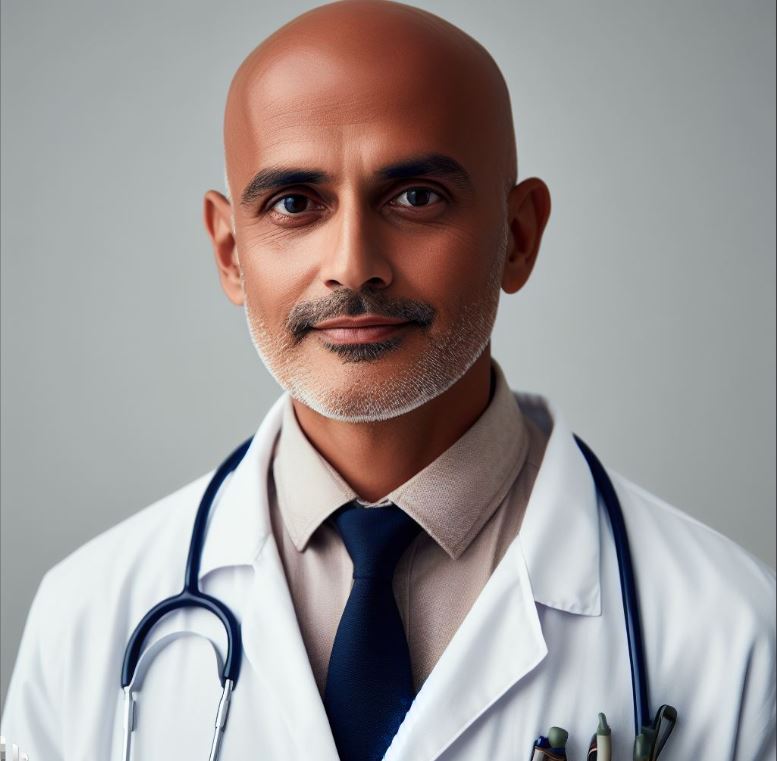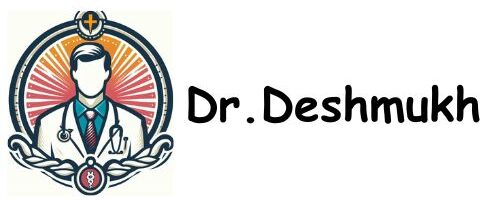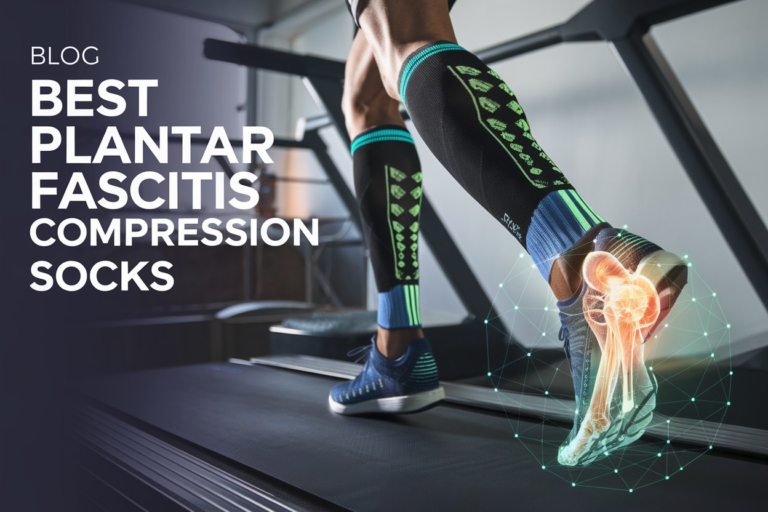Transformations with Before and After TRT Therapy

Nearly 40% of men over 45 have low testosterone, causing health problems. Testosterone Replacement Therapy (TRT) is a powerful solution. It brings big changes in energy, mood, and looks.
People on TRT often lose a lot of weight and gain muscle. This greatly improves their life quality. Before and after TRT therapy, many see huge improvements.
Eric lost 110 pounds, and Mike gained 50 pounds of muscle. These stories show TRT’s big impact. We’ll look at how TRT changes health, fitness, and well-being through real-life examples.
Table of Contents
What is TRT Therapy?
Testosterone Replacement Therapy (TRT) helps men with low testosterone levels. It aims to boost their energy and health. Many men with low testosterone find this therapy very helpful.
Definition and Purpose
The TRT therapy definition is about giving testosterone to men with low levels. The trt therapy purpose is to fix many issues. These include tiredness, low sex drive, mood swings, and losing muscle.
Studies show that about 2.4 million men in the USA between 40 and 69 have low testosterone. Fixing this is key to feeling better every day.
How It Works
Knowing how TRT works helps understand its different ways of use. These include injections, gels, patches, and pellets under the skin. Each method works differently in the body.
For example, some methods work fast, like nasal sprays, which start working in 40 minutes. Others, like patches, take longer but still work well.
| Administration Method | Peak Serum Levels |
|---|---|
| Buccal | 10-12 hours |
| Nasal | 40 minutes |
| Subdermal Implants | 1 month |
| Transdermal Patches | 8.2 hours |
| Testosterone Gel (AndroGel) | 16-22 hours |
| IM Testosterone Cypionate | 4-5 days |
| IM Testosterone Undecanoate | Every 10 weeks after loading phase |
Studies show TRT works well, with benefits seen in just a few weeks. It can improve energy, mood, muscle strength, and sex drive. For more on the good and bad of TRT, check out testosterone therapy pros and cons.
Who Needs TRT Therapy?
Figuring out who needs TRT therapy means spotting the signs of low testosterone. Testosterone levels usually hit their peak in the teens and then start dropping after 30 or 40. This drop can cause symptoms that affect everyday life. People showing these signs might want to get checked for screening for low testosterone.
Signs and Symptoms of Low Testosterone
Men can show several signs of low testosterone, like:
- Less interest in sex
- More body fat
- Thinner bones
- Feeling less motivated or focused
- Feeling tired and losing muscle
These signs can really change how well someone lives. Spotting them is key to figuring out who needs TRT therapy.
Screening and Diagnosis
To check for low testosterone, doctors use blood tests. These tests look at:
- Total testosterone levels
- Luteinizing hormone (LH)
- Follicle-stimulating hormone (FSH)
The American Urological Association says levels below 300 ng/dL are low. Doctors do several tests to make sure the treatment is right.
Procedure for TRT
Testosterone replacement therapy (TRT) starts with knowing the process. There are different ways to get TRT, each fitting different needs. You can get it through injections, gels, or pellets, each with its own benefits.
Different Modes of Administration
Each TRT method has its own perks. This variety lets patients pick what works best for them. Here are some common ways to get TRT:
- Injections: Given in a doctor’s office, they quickly raise testosterone levels.
- Transdermal gels: Applied to the skin, they slowly release testosterone, making daily use easy.
- Pellets: These implants under the skin release testosterone over time, needing fewer visits.
Initial Consultation Process
First, a detailed TRT consultation is needed. Doctors review your health history, symptoms, and lifestyle to make a plan just for you. Blood tests, like PSA and testosterone checks, are key during this time.
This step helps doctors choose the best TRT for you. Regular check-ups are important to keep an eye on your levels and adjust the treatment if needed. This way, any issues can be caught early, and progress can be tracked.
| Administration Mode | Benefits | Frequency |
|---|---|---|
| Injections | Quick effects; adjustable dosage | Every 1-2 weeks |
| Transdermal Gels | Easy to apply; stable dosing | Daily |
| Pellets | Long-lasting; minimal maintenance | Every 3-6 months |
Knowing about TRT options and getting a detailed consultation is key. This way, patients can start a journey to better testosterone levels and health. For more info, check out this link.
Pre-Treatment Care
Before starting testosterone replacement therapy (TRT), it’s important to do some pre-treatment care. This step includes tests and checks to make sure you’re ready for the therapy. You’ll likely have to take TRT tests to find any health problems before treatment starts.
Required Tests and Assessments
Tests are a big part of getting ready. Men will have blood tests to check their testosterone, LH, FSH, and PSA levels. These tests are especially important if you’re over 40.
They also look at things like gynecomastia symptoms and fertility. They check your hematocrit levels too. High hematocrit levels can mean you might have polycythemia, which is bad for your heart.
Getting these tests right is key. It helps decide how your therapy will go. Talking with your doctor during these tests is important. It makes sure you know what’s happening and feel okay with it.
Preparing for Your First Treatment
When you’re getting ready for TRT, you’ll talk about how you’ll get the treatment. Some men like injections, but many prefer transdermal therapy because it’s easier. It’s important to know about possible side effects and how long it might take to see results.
Talking openly with your doctor helps you feel more in control. This makes starting TRT a better experience.
Getting ready for TRT is not just about medical checks. It’s also about being emotionally ready. Everyone’s journey is different, and knowing this is key. For help with erectile dysfunction, check out this resource.
Before and After Treatment Pictures
Seeing the changes from before and after TRT treatment pictures really shows how much TRT can change a person. These pictures show the amazing physical changes men go through. They gain muscle, lose fat, and look better, making them feel more confident and full of life.
The Impact of TRT on Physical Appearance
Everyone’s journey is different, but the results are often amazing. Jonathan lost 130 pounds in six months with TRT. Bill lost 70 pounds and got his energy back. These changes make them look and feel healthier, boosting their self-esteem.
Real Patient Transformations
Many patients have seen big changes with TRT. Mike gained 50 pounds of muscle after a car crash. Eric lost 110 pounds and shrank five shirt sizes in a year. Jimison lost 120 pounds over five years, changing his clothes sizes a lot. These stories show what TRT results can do with a healthy lifestyle.
| Patient | Weight Loss (lbs) | Muscle Gain (lbs) | Comments |
|---|---|---|---|
| Jonathan | 130 | – | From 360 to 230 pounds in six months. |
| Mike | – | 50 | Regained muscle after car accident. |
| Bill | 70 | – | Regained energy and lost weight with TRT. |
| Eric | 110 | – | Lost 5 shirt sizes in 1 year. |
| Jimison | 120 | – | Adjusted 3 shirt sizes after 5 years of TRT. |
| Scott | 60 | – | Overall health significantly improved after starting TRT. |
Post-Treatment Care
Post-treatment care is key to the success of testosterone replacement therapy (TRT). It includes regular check-ups and lifestyle changes to get the most out of TRT. Regular monitoring ensures the therapy keeps working well and spots any needed changes.
Follow-up Appointments
Follow-up care involves blood tests to check hormone levels and overall health. These visits are vital for tracking progress and making needed adjustments. Men on TRT can greatly benefit from these visits, addressing any side effects or concerns.
Regular follow-ups help keep the treatment on track with individual goals and health needs.
Lifestyle Adjustments for Optimal Results
Along with follow-up care, making lifestyle changes can boost TRT benefits. Patients are advised to:
- Regular Exercise: Doing both aerobic and strength training can build muscle and improve heart health.
- Balanced Diet: Eating a diet full of protein, healthy fats, and whole grains supports well-being and hormone balance.
- Stress Management: Using relaxation techniques like meditation or yoga can keep emotions stable.
- Sufficient Sleep: Getting enough sleep is crucial for recovery and hormone health.
These lifestyle changes not only improve TRT results but also lead to lasting physical and emotional benefits. They enhance the quality of life for those on this journey.
| Lifestyle Change | Benefits |
|---|---|
| Regular Exercise | Increases muscle mass and boosts energy levels |
| Balanced Diet | Supports hormone balance and promotes weight loss |
| Stress Management | Enhances emotional well-being and reduces fatigue |
| Sufficient Sleep | Improves recovery and hormonal regulation |
Potential Risks of TRT
Testosterone Replacement Therapy (TRT) helps men with low testosterone. It’s important to know the risks and side effects. This way, you can make informed choices about your health.
Common Side Effects
Many men find relief with TRT, but it’s key to watch out for side effects. These can include:
- Acne and skin issues due to increased oil production
- Fluid retention leading to swelling
- Gynecomastia, or enlarged breast tissue
- Changes in testicular size and function
Seeing your doctor regularly can help manage these side effects. Some men might also face fertility issues. But, these usually go back to normal when treatment stops.
Long-Term Health Considerations
Long-term use of TRT needs careful monitoring. Key areas to watch include:
- Prostate health, as TRT might reveal previously hidden prostate cancer
- Cholesterol levels, which may change with therapy
- An increased risk of erythrocytosis, heightening the likelihood of blood clots
The FDA warns about higher risks of heart attacks and strokes. Regular tests, like PSA tests, are vital during TRT. Talking to your doctor helps manage TRT risks. For those looking for alternatives, anastrozole is being explored as a creative solution for testosterone levels.
Products for Pre and Post Treatment
Using the right products before and after TRT can really make a difference. Supplements and skincare are key to better hormone health and handling side effects. They help your body heal and keep your skin healthy during treatment.
Recommended Supplements
Looking at TRT supplements, some nutrients stand out. Here are a few:
- Vitamin D: It’s great for overall health and might boost testosterone levels.
- Zinc: It’s good for hormone health and helps make testosterone.
- Omega-3 Fatty Acids: They’re good for your health and can help with recovery.
Skincare Products to Enhance Results
It’s also important to take care of your skin during therapy. Here are some skincare tips for TRT:
- Acne Treatment Products: They can reduce acne caused by hormone changes.
- Moisturizers: They keep your skin moist and prevent dryness.
- Sunscreen: It protects your skin from the sun, which is important during hormone therapy.
Using the right products before and after TRT can make your experience better. The right supplements and skincare can improve your health and skin as you adjust to treatment.
Alternative Treatments for Low Testosterone
Many men with low testosterone look for options other than traditional treatments. Lifestyle changes and natural supplements can help manage symptoms well.
Lifestyle Changes
Making lifestyle changes for low T can improve hormone balance. Regular exercise, especially strength training, boosts testosterone naturally. Here are some important changes to consider:
- Start exercising regularly, focusing on weightlifting and high-intensity workouts.
- Get enough sleep, as most testosterone is made during deep sleep.
- Eat a balanced diet, including foods rich in zinc like nuts, beans, and whole grains.
- Drink less alcohol and avoid smoking, as they can lower testosterone.
- Use mindfulness and relaxation to manage stress.
Natural Supplements
Some natural supplements may help boost testosterone. Research shows certain ingredients can increase testosterone levels:
- Fenugreek may improve testosterone and libido.
- D-aspartic acid, found in nuts and beans, supports hormone production.
- Ashwagandha is known for reducing stress and boosting testosterone in men.
- Vitamin D supplements, about 3,300 IUs daily, may also raise testosterone levels.
It’s important to talk to a healthcare provider before starting these treatments. They can help make sure these options fit your health needs and goals. A plan that includes lifestyle changes and natural supplements can help regulate hormones and improve overall health.
The Cost of TRT Therapy
Understanding the costs of testosterone replacement therapy (TRT) is key for those thinking about it. The costs can vary a lot, depending on how the treatment is given and if insurance helps. Knowing the costs helps people plan their budgets better.
Average Price Range
The price range for TRT includes several things like consultation fees, testing, and ongoing therapy costs. The first step, a health check and blood test for testosterone, usually costs about $25. Monthly costs for self-administered testosterone injections can be:
- $105 with insurance
- $155 without insurance
Testosterone pellets are another common treatment, costing around $1,100 per round. Daily gel packets average about $105 a month. Lab work for hormone assessments can cost between $80 and $1,500, depending on the tests. At-home hormone tests are usually around $45.
Insurance Coverage Options
Insurance for TRT can vary a lot, with many plans covering some costs. It’s smart to check with your insurance about TRT coverage. For example, the Low T Center accepts many health insurance plans, which can help with costs.
Services like Hone offer monthly plans for about $129. These plans include labs, consultations, and medication delivery. They can be more affordable than traditional clinics, where weekly visits might cost more.
Finding TRT Treatment Near Me
Finding a qualified provider for testosterone replacement therapy (TRT) is key to managing hormonal health. There are many ways to find TRT near you. Online directories, healthcare networks, and referrals from doctors can help a lot.
Tips for Locating Providers
Here are some tips for finding TRT providers:
- Use search engines with “TRT near me” to find local clinics.
- Check reviews and ratings to see how happy patients are.
- Find out what services the clinic offers and the doctors’ qualifications.
- Ask friends or family for recommendations based on their experiences.
- Make sure the providers are certified in testosterone therapy.
What to Look for in a Clinic
Choosing a TRT clinic is important for good treatment. Here are things to consider:
| Criteria | Description |
|---|---|
| Provider Credentials | Make sure doctors are certified in hormone therapy. |
| Treatment Customization | Look for clinics that make treatment plans for you. |
| Ongoing Support | Check if they offer follow-up and help with lifestyle changes. |
| Reputation and Experience | Research the clinic’s history and patient success stories. |
By looking at these factors, you can get better treatment. It’s important to understand the value of finding TRT near me for your health.
Patient Testimonials and Reviews
Patient testimonials give us a peek into how TRT changes lives. They share stories of emotional growth and physical improvements. These stories motivate others thinking about trying TRT. Many success stories show the journey patients take, from before to after treatment.
Success Stories
Many have found hope and recovery with TRT. Jonathan lost over 100 pounds in six months, changing his life. Mike, recovering from a car accident, gained 50 pounds of muscle, showing TRT’s power.
Other stories are similar. Jimison lost 120 pounds in five years, and Amadee lost 30 pounds in six months. These stories highlight TRT’s role in body transformation and boosting self-esteem.
Candid Experiences
TRT also brings emotional and psychological changes. Gordon said TRT changed his life’s path, showing its deep impact. Anonymous patients, ages 63 and 53, felt their lives improved and thanked The Men’s Health Clinic’s team.
Their stories talk about feeling alive again, clearer minds, and better relationships. These are common changes after starting TRT.
Lifestyle Changes to Support TRT
Making lifestyle changes can really help with TRT. A good plan includes diet and exercise. These changes help keep testosterone levels up and improve your health.
Diet Adjustments
Your diet is key for healthy testosterone. Eating right can make a big difference. Here are some important foods to include:
- Lean Proteins: Chicken, fish, and legumes help keep muscles strong.
- Healthy Fats: Avocados, nuts, and olive oil are good for your heart and testosterone.
- Whole Grains: They give you energy and help control blood sugar.
- Fruits and Vegetables: Full of vitamins and minerals, they balance hormones.
- Fiber: Good for your gut and energy.
Stay away from foods high in sugar and unhealthy fats. They can hurt the benefits of TRT.
Exercise Recommendations
Regular exercise, especially with TRT, makes treatment better. Here are some exercises to try:
- Strength Training: Lifting weights builds muscle and strength.
- Cardiovascular Exercises: Running or swimming is good for your heart and stamina.
- Rest and Recovery: Taking rest days helps avoid injuries and helps you recover.
A study with 50 men showed exercise helps with TRT. Those who exercised saw better testosterone levels and symptom relief than those who didn’t.
| Parameter | Group I (TRT Only) | Group II (TRT + Exercise) |
|---|---|---|
| Testosterone Levels at 12 Weeks | Increased | Significantly Increased |
| Testosterone Levels at 20 Weeks | Decreased | Higher than Group I |
| Symptom Improvement | Moderate | Significant |
| Patient Satisfaction (GAQ Score) | Lower | Higher |
By making these lifestyle changes, you can get more out of TRT. You’ll feel healthier and more energetic.
Monitoring Progress During TRT
It’s key to watch how TRT is working for your health. Keeping an eye on hormone levels helps make sure you get the best treatment. This way, doctors can see if changes are needed in your treatment.
Tracking Hormone Levels
Checking hormone levels is very important. Blood tests help doctors see how well treatment is working. They look at testosterone levels to see how the body is reacting.
Studies show that some effects, like feeling more sexually interested, start to show in three weeks. But, it takes 12 to 16 weeks to see changes in muscle strength. So, it’s crucial to keep checking TRT levels regularly.
Adjusting Treatment Plans
Changing TRT plans is a big part of making it work better. Working together, patients and doctors can make changes based on what the tests show. For example, some treatments might need more frequent adjustments than others.
Good monitoring leads to better health results. Regular checks help doctors make sure treatment is right for you. To find out more about keeping testosterone levels healthy, check out this resource.
Conclusion: The Benefits of Before and After TRT Therapy
Testosterone Replacement Therapy (TRT) brings big benefits of TRT therapy for those with low testosterone. Many see a big boost in their quality of life. They feel more energetic, happier, and healthier.
TRT helps restore testosterone levels, leading to big changes. These changes help patients feel more alive and connected to life.
Starting the journey of TRT can change more than just your body. It can also improve your mind and feelings. People notice better sleep, more energy, and even sharper thinking.
These changes make daily life better and help achieve more. It’s a big win for those who try it.
Millions suffer from hypogonadism, but few get the therapy that could change their lives. For those thinking about TRT, it’s a chance for a better life. Taking the step towards TRT therapy can lead to big improvements and a new start.
FAQ
What is Testosterone Replacement Therapy (TRT)?
Who should consider TRT?
How is low testosterone diagnosed?
What are the common modes of TRT administration?
What can I expect during the initial consultation for TRT?
What tests are needed before starting TRT?
How does TRT affect physical appearance?
What are the potential side effects of TRT?
How can I maximize the benefits of TRT?
What lifestyle adjustments are recommended while undergoing TRT?
How much does TRT usually cost?
What is Testosterone Replacement Therapy (TRT)?
Who should consider TRT?
How is low testosterone diagnosed?
What are the common modes of TRT administration?
What can I expect during the initial consultation for TRT?
What tests are needed before starting TRT?
How does TRT affect physical appearance?
What are the potential side effects of TRT?
How can I maximize the benefits of TRT?
What lifestyle adjustments are recommended while undergoing TRT?
How much does TRT usually cost?
FAQ
What is Testosterone Replacement Therapy (TRT)?
TRT is a treatment that gives testosterone to people with low levels. It helps with fatigue, low sex drive, and mood swings.
Who should consider TRT?
If you have signs like tiredness, mood changes, and low sex drive, you might need TRT. It’s best to get checked by a doctor.
How is low testosterone diagnosed?
Doctors use blood tests to check testosterone, LH, and FSH levels. They also look at your medical history and symptoms.
What are the common modes of TRT administration?
TRT can be given through injections, gels, patches, or pellets. The choice depends on what you prefer and what your doctor says.
What can I expect during the initial consultation for TRT?
At your first visit, your doctor will talk about your health, symptoms, and lifestyle. They will then create a TRT plan just for you.
What tests are needed before starting TRT?
Before starting TRT, you’ll need blood tests to check your testosterone levels. This helps your doctor understand your hormone health.
How does TRT affect physical appearance?
Many people see big changes after starting TRT. They gain muscle, look better, and feel more confident.
What are the potential side effects of TRT?
Side effects can include acne, water retention, and changes in breast size. Always talk to your doctor about these risks.
How can I maximize the benefits of TRT?
To get the most out of TRT, eat well, exercise regularly, and talk to your doctor often. These steps help a lot.
What lifestyle adjustments are recommended while undergoing TRT?
Eating healthy fats, proteins, and whole grains is key. Also, keep up with exercise. These steps help your hormone levels and TRT results.
How much does TRT usually cost?
TRT can cost between
FAQ
What is Testosterone Replacement Therapy (TRT)?
TRT is a treatment that gives testosterone to people with low levels. It helps with fatigue, low sex drive, and mood swings.
Who should consider TRT?
If you have signs like tiredness, mood changes, and low sex drive, you might need TRT. It’s best to get checked by a doctor.
How is low testosterone diagnosed?
Doctors use blood tests to check testosterone, LH, and FSH levels. They also look at your medical history and symptoms.
What are the common modes of TRT administration?
TRT can be given through injections, gels, patches, or pellets. The choice depends on what you prefer and what your doctor says.
What can I expect during the initial consultation for TRT?
At your first visit, your doctor will talk about your health, symptoms, and lifestyle. They will then create a TRT plan just for you.
What tests are needed before starting TRT?
Before starting TRT, you’ll need blood tests to check your testosterone levels. This helps your doctor understand your hormone health.
How does TRT affect physical appearance?
Many people see big changes after starting TRT. They gain muscle, look better, and feel more confident.
What are the potential side effects of TRT?
Side effects can include acne, water retention, and changes in breast size. Always talk to your doctor about these risks.
How can I maximize the benefits of TRT?
To get the most out of TRT, eat well, exercise regularly, and talk to your doctor often. These steps help a lot.
What lifestyle adjustments are recommended while undergoing TRT?
Eating healthy fats, proteins, and whole grains is key. Also, keep up with exercise. These steps help your hormone levels and TRT results.
How much does TRT usually cost?
TRT can cost between $1,500 and $3,500 a year. The cost depends on how often you get treatment and the method used.
Will my insurance cover TRT?
Insurance coverage for TRT varies. It’s best to check with your provider to see what benefits you have.
How can I find a qualified TRT provider?
Look for a qualified provider online or through your healthcare network. Your primary care doctor can also give you a referral.
What do patient testimonials reveal about TRT?
Many patients say TRT has changed their lives. They feel better physically and emotionally, and their quality of life improves.
What supplements may support TRT treatment?
Supplements like vitamin D, zinc, and omega-3 fatty acids are often recommended. They help support hormone health and overall wellness during TRT.
Are there alternative treatments for low testosterone?
Yes, you can try diet and exercise changes or natural supplements like fenugreek and ashwagandha. But always talk to your doctor first.
How often should I monitor my hormone levels during TRT?
It’s important to have regular blood tests to check your testosterone levels. This helps your doctor adjust your treatment as needed.
,500 and ,500 a year. The cost depends on how often you get treatment and the method used.
Will my insurance cover TRT?
Insurance coverage for TRT varies. It’s best to check with your provider to see what benefits you have.
How can I find a qualified TRT provider?
Look for a qualified provider online or through your healthcare network. Your primary care doctor can also give you a referral.
What do patient testimonials reveal about TRT?
Many patients say TRT has changed their lives. They feel better physically and emotionally, and their quality of life improves.
What supplements may support TRT treatment?
Supplements like vitamin D, zinc, and omega-3 fatty acids are often recommended. They help support hormone health and overall wellness during TRT.
Are there alternative treatments for low testosterone?
Yes, you can try diet and exercise changes or natural supplements like fenugreek and ashwagandha. But always talk to your doctor first.
How often should I monitor my hormone levels during TRT?
It’s important to have regular blood tests to check your testosterone levels. This helps your doctor adjust your treatment as needed.
Will my insurance cover TRT?
How can I find a qualified TRT provider?
What do patient testimonials reveal about TRT?
What supplements may support TRT treatment?
Are there alternative treatments for low testosterone?
How often should I monitor my hormone levels during TRT?
Will my insurance cover TRT?
How can I find a qualified TRT provider?
What do patient testimonials reveal about TRT?
What supplements may support TRT treatment?
Are there alternative treatments for low testosterone?
How often should I monitor my hormone levels during TRT?






